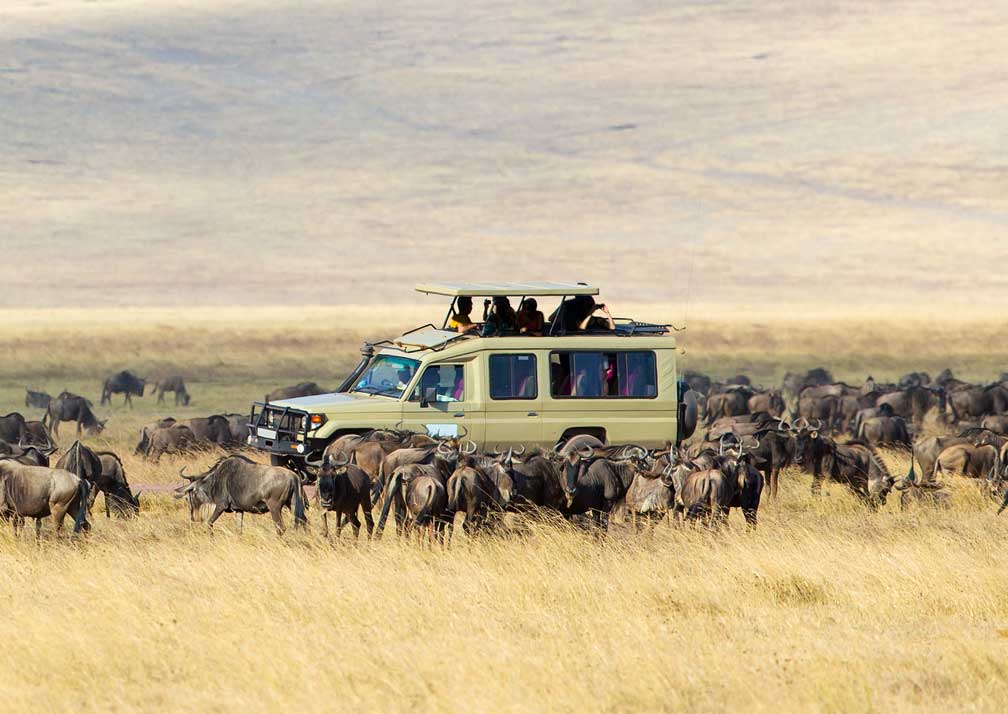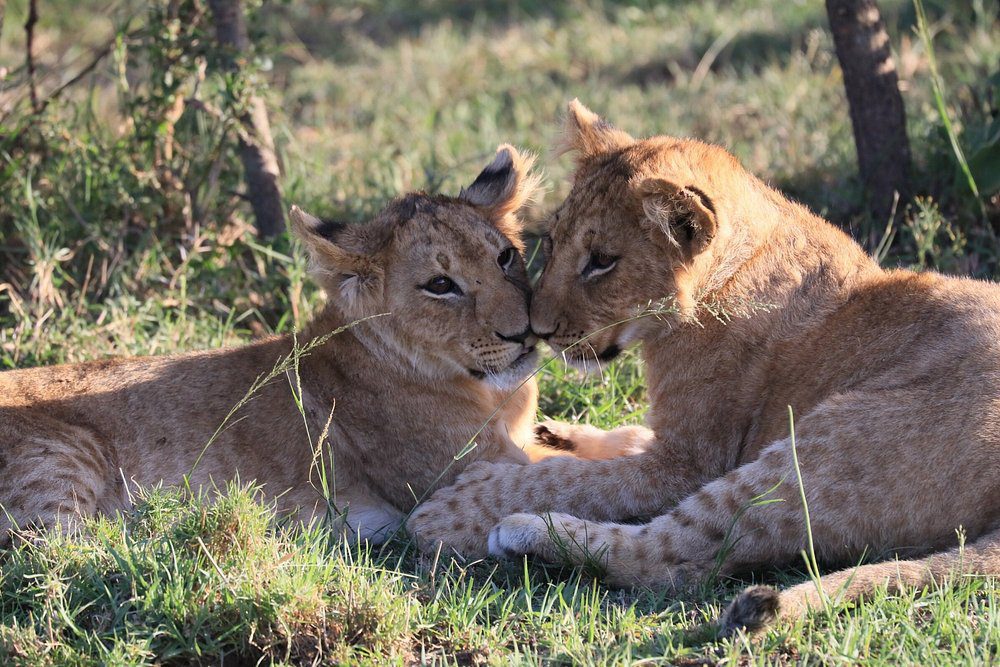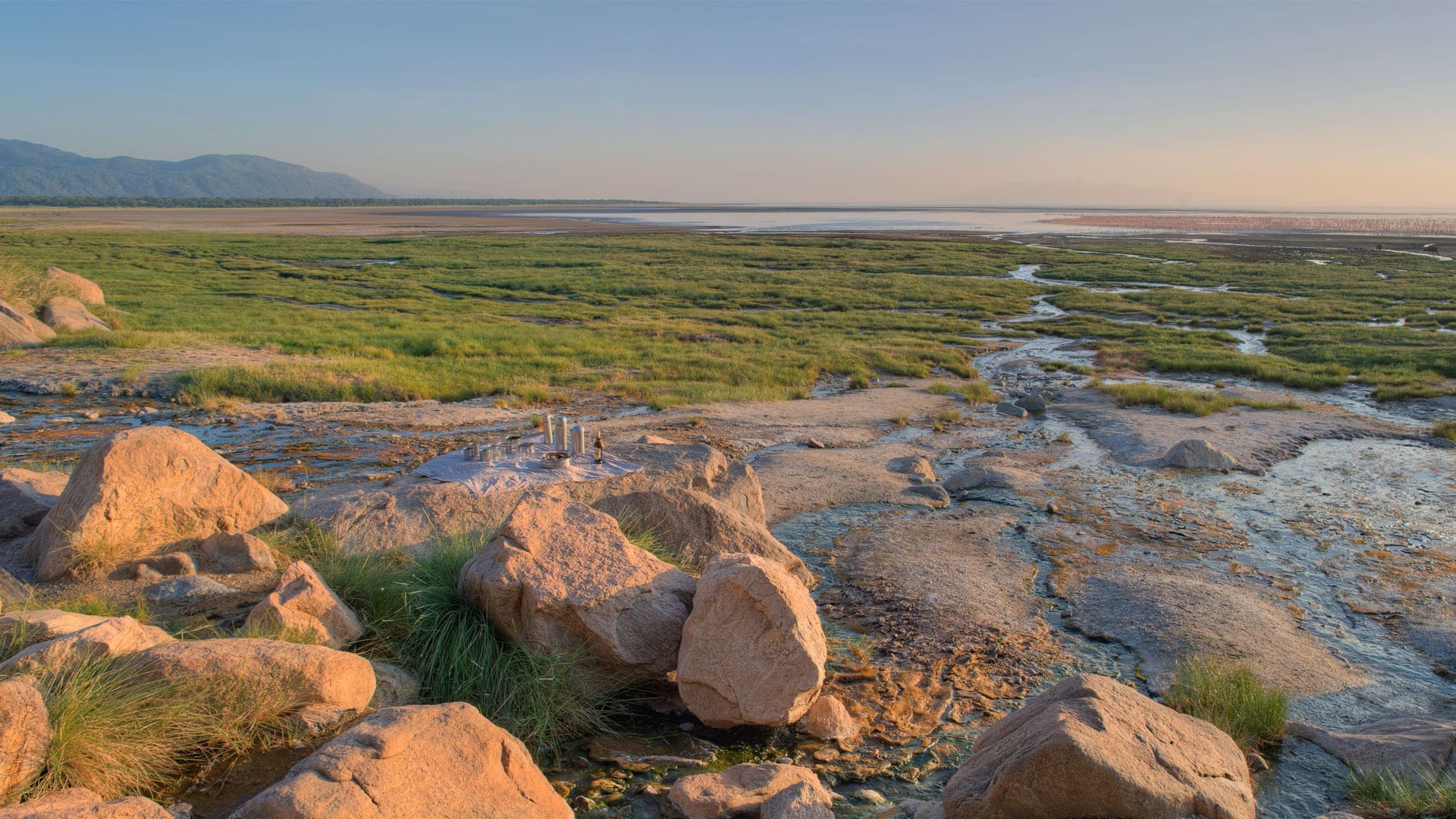The Ngorongoro Conservation Area (NCA) is a UNESCO World Heritage Site and one of Africa’s most spectacular wildlife destinations. Located in northern Tanzania, this vast, protected area spans over 8,292 square kilometers and is home to the famous Ngorongoro Crater, the world’s largest unbroken volcanic caldera.
The crater is a haven for diverse wildlife, including the Big Five (lions, elephants, leopards, buffaloes, and rhinos) as well as large populations of wildebeests, zebras, gazelles, and more. The Ngorongoro Crater serves as a crucial calving ground for the Great Wildebeest Migration between December and March, offering incredible wildlife viewing opportunities.
Beyond the crater, the conservation area also includes Olduvai Gorge, one of the world’s most significant paleoanthropological sites, where early human fossils and tools dating back millions of years have been discovered. Visitors can also experience the unique Hadzabe and Datoga tribes, who continue to live traditional hunter-gatherer lifestyles in the region. With its breathtaking landscapes, rich wildlife, and cultural significance, the Ngorongoro Conservation Area is a must-visit destination for nature lovers and history enthusiasts alike.


